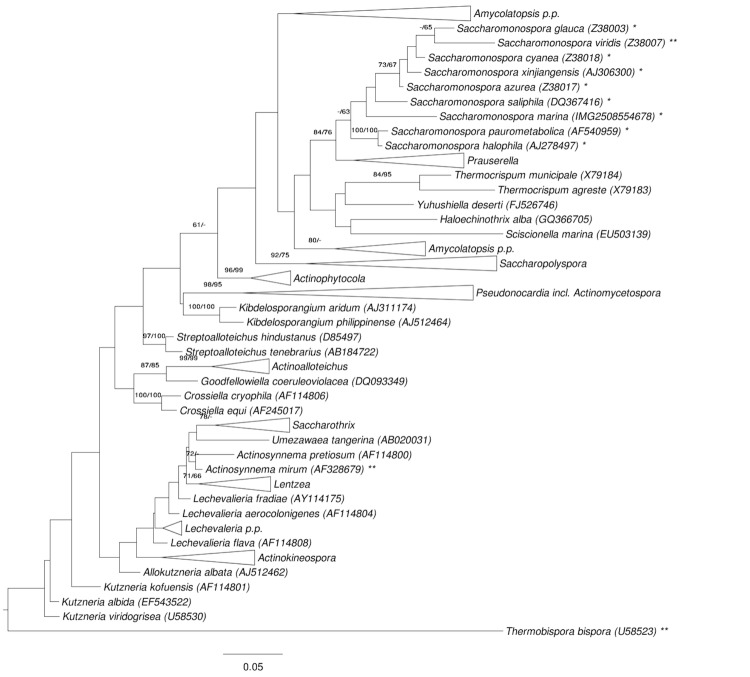Figure 1.
Phylogenetic tree highlighting the position of S. marina relative to the type strains of the other species within the family Pseudonocardiaceae. The tree was inferred from 1,391 aligned characters [15,16] of the 16S rRNA gene sequence under the maximum likelihood (ML) criterion [17]. Rooting was done initially using the midpoint method [18] and then checked for its agreement with the current classification (Table 1). The branches are scaled in terms of the expected number of substitutions per site. Numbers adjacent to the branches are support values from 600 ML bootstrap replicates [19] (left) and from 1,000 maximum-parsimony bootstrap replicates [20] (right) if larger than 60%. Lineages with type strain genome sequencing projects registered in GOLD [21] are labeled with one asterisk, those also listed as 'Complete and Published' with two asterisks [4,22,23], with S. azurea missing second asterisk but published in this issue [24]. Actinopolyspora iraqiensis Ruan et al. 1994 [25] was ignored in the tree. The species was proposed to be a later heterotypic synonym of S. halophila [26], although the name A. iraqiensis would have had priority over S. halophila. This taxonomic problem will soon be resolved with regard to the genomes of A. iraqiensis and S. halophila, which were both part of CSP 312.

